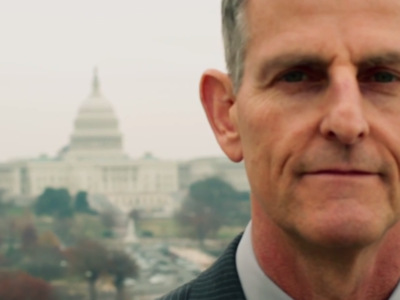In February former CIA and NSA Director Michael Hayden published a memoir, Playing to the Edge: American Intelligence in the Age of Terror, which he uses in part to defend the CIA’s use of torture and abuse after 9/11. This week, Senator Dianne Feinstein took Hayden to task, releasing a detailed rebuttal to Hayden’s claims.
Feinstein knows what she’s talking about. As the former chair of the Senate intelligence committee (SSCI), she opened a multi-year study of the CIA’s torture program and released a 500-plus page executive summary in December 2014.
Using the CIA’s own internal communications as its source, the committee’s report picked apart the CIA and Bush Administration’s narrative of a controlled, effective, and essential interrogation program that produced unique intelligence, stopped plots, and saved lives. The program, as the report shows, was a rogue experiment that was far more brutal and much less effective than the CIA led the administration, Congress, and the American people to believe.
Notably, since releasing its rebuttal to the SSCI report, the CIA quietly corrected that rebuttal, acknowledging that many of the report’s conclusions the agency had denied are in fact correct.
Yet there are now so many memoirs by the public officials who conceived of and oversaw the torture program defending it tooth and nail that it’s become almost a cottage industry. Hayden became CIA Director in 2006 and directed a scaled-back torture program, and he’s no different.
In his memoir Hayden makes numerous assertions that are directly contradicted by the facts, including facts publicly acknowledged by the CIA. When Hayden says that President Bush’s September 2006 speech lauding the program as effective and exemplary was accurate, he contradicts not only the CIA records SSCI examined, but also statements that the CIA has since released acknowledging that the agency fed the president inaccurate information.
Where Hayden insists no one familiar with the program ever doubted its effectiveness, Feinstein provides examples from CIA records of multiple objections raised by CIA officers and staff. Hayden claims that information from the torture of detainees Khalid Sheikh Mohammad and Abu Faraj al-Libi led to finding Osama bin Laden, but Feinstein shows that the timeline doesn’t match the claims and that the relevant information actually came from a detainee who hadn’t been tortured.
Where Hayden claims that all the CIA personnel involved with the program were professional and trained, Feinstein points out that CIA records show this isn’t true. Records show that training was not as thorough or widespread as Hayden implies, and as the CIA has now acknowledged, multiple personnel who had prior behavioral issues that should have excluded them from interrogating detainees were still allowed to conduct interrogations.
Feinstein rebuts Hayden’s claims that the CIA didn’t use torture on any detainee who cooperated. CIA records, as Feinstein notes, show that multiple detainees were not given the chance to cooperate before their torture began, and in at least one case, the CIA even stopped questioning a detainee who had been cooperating (depriving him of human contact for 47 days). Feinstein also highlights the CIA’s failure to properly respond to Congressional inquiries about the program and other misleading information that the agency—and Hayden specifically—provided them.
Given all of Hayden’s blatantly misleading and incorrect assertions, it’s no wonder that the SSCI report reserves an entire section just for Hayden’s misleading statements while head of the CIA.
In his memoir, Hayden insists that the CIA has suffered unfair repercussions for the torture program. It’s a hard claim to take seriously, given (as the SSCI report shows) virtually no CIA personnel were punished for using torture (even beyond what the Bush Administration had authorized) and murdering detainees. Some officers and contractors were rewarded for their conduct.
Since his memoir’s release, Hayden has appeared on various news channels, most famously insisting that because of the backlash the CIA faced, if any future president wants the CIA to resurrect the “enhanced interrogation” program, “he better bring his own bucket, because CIA officers aren’t going to do it.”
Hayden may be right that torture won’t be an option in the future, but not for the reason he thinks.
After the SSCI report, Senator Feinstein and Senator John McCain championed an amendment that finally closed any loophole in U.S. law that would allow a return to torture. The amendment passed with an overwhelmingly bipartisan 78-21 vote. Torture won’t be an option in the future—not because of Hayden’s falsehoods—but because the Senate’s report finally revealed the truth about the CIA’s conduct.

